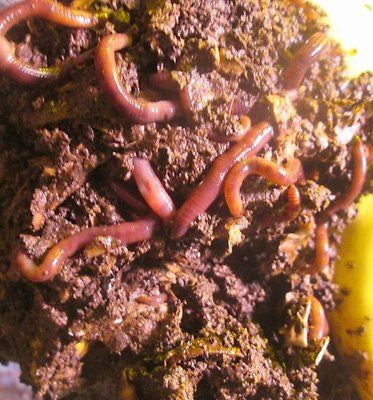Red worms: Ways to maximize results
Red worms: Ways to maximize results
Blog Article
Red Wigglers: Your Eco-Friendly Option for a Greener Yard
Red wigglers, or Eisenia fetida, offer a lasting strategy to boosting yard health with vermicomposting. By incorporating red wigglers right into your horticulture practices, you can effectively manage waste while supporting a lively environment.
(red wiggler worms)
What Are Red Wigglers?
Although typically mistaken for routine earthworms, red wigglers (Eisenia fetida) are a distinct varieties recognized for their performance in composting raw material. These worms thrive in abundant, natural atmospheres, such as compost piles and vermicomposting systems, where they play an important role in damaging down waste. Unlike their more common equivalents, red wigglers like a warmer environment, normally in between 55 ° F and 77 ° F, which maximizes their task and performance.
Red wigglers are identified by their reddish-brown pigmentation and segmented bodies, which can expand up to 4 inches in length. They possess an unique capacity to consume and absorb organic products at an outstanding price, refining up to half their body weight daily. This quick decomposition procedure not only improves the soil however also adds to the total health and wellness of the garden environment.
In terms of recreation, red wigglers are prolific, with the ability of creating cocoons which contain several eggs. This permits fast population growth, making them an ideal option for composting undertakings. Their adaptability and starved cravings for organic waste position red wigglers as an essential ally for environmentally mindful gardeners looking for lasting practices.
Benefits of Making Use Of Red Wigglers
Making use of red wigglers in the garden offers various benefits that improve both soil top quality and plant wellness. These earthworms are outstanding decomposers, breaking down raw material such as kitchen area scraps and backyard waste right into nutrient-rich spreadings. These spreadings, frequently referred to as "worm gold," offer necessary nutrients that improve dirt fertility, advertising vivid plant development.
Red wigglers additionally improve dirt structure. The existence of red wigglers boosts microbial task in the dirt, producing a growing ecosystem that contributes to condition resistance and improved plant health and wellness.
Another considerable advantage of utilizing red wigglers is their ability to reduce waste. By composting natural materials with vermicomposting, garden enthusiasts can draw away waste from garbage dumps while all at once enhancing their soil. This green strategy not just supports sustainable techniques but likewise promotes a healthier setting. In summary, integrating red wigglers right into gardening techniques yields significant benefits, making them a beneficial addition to any eco-conscious garden.
(red wiggler worms for sale near me)
Exactly How to Begin Vermicomposting
To begin vermicomposting, it's necessary to produce an appropriate environment for red wigglers to thrive, as their success directly impacts the performance of the composting procedure. Begin by choosing a container, such as a plastic or wooden container, with ample drain and ventilation. A size of about 2 square feet is excellent for a family, enabling a manageable worm population.
Following, prepare bed linen material that is wet however not overly damp. Shredded newspaper, cardboard, and coconut coir are outstanding choices, giving a comfortable environment while likewise working as a carbon resource. Fill up the bin with 4 to 6 inches of bed linens.
After establishing the bedding, present your red wigglers. A common beginning population is about 1 extra pound of worms, which can consume about half an extra pound of food scraps daily. It is vital to include food scraps slowly, concentrating on veggie peelings, fruit waste, and coffee grounds, while staying clear of meat, dairy products, and oily foods to stop smells.
Preserving a Healthy Worm Container
When your red wigglers are settled right into their new bed linen, maintaining a healthy and balanced worm bin comes to be critical to guarantee optimum composting conditions. The key elements to monitor consist of wetness, temperature, and aeration. Preferably, the worm bin need to be kept wet however not soaked; a humidity level around 60-70% is optimum. To achieve this, regularly examine the bed linen and include water as needed, while additionally utilizing completely dry materials such as shredded paper to absorb excess dampness.
Temperature control is equally important. Red wigglers flourish in environments between 55 ° F and 77 ° F(13 ° C to 25 ° C) Avoid revealing the container to severe temperature levels; severe warm can kill the worms, while excessive cold can reduce their task.
Oygenation is crucial to avoid anaerobic conditions, which can bring about unpleasant odors and hurt the worms. Transform the bed linen carefully every couple of weeks to advertise air flow and distribute food evenly.
Feeding your red wigglers is another essential aspect. Offer a balanced diet plan of kitchen area scraps, avoiding citrus and spicy foods, which can be harmful to their health. By frequently keeping track of these factors, you can make sure a growing environment within your worm bin.

Tips for Using Worm Castings
Regularly including worm castings right into your garden can dramatically enhance dirt health and plant growth. To properly utilize worm spreadings, start by identifying the proper application rate, which usually varies from 10-20% of the total soil quantity. This ensures optimal nutrient accessibility without frustrating your plants.
When using worm spreadings, blend them right into the top couple of inches of dirt around well-known plants or incorporate them into your seed-starting mix for new plants. In addition, consider creating a worm tea by steeping worm castings in water for 24-48 hours.

Conclusion
The usage of red wigglers in gardening techniques provides a lasting technique to waste administration and soil enrichment. The combination of red wigglers into horticulture routines inevitably supports both eco-friendly Visit Your URL equilibrium and farming productivity. red worms.
Report this page